| Home | Chapter History | National Info | Chapter Info | CINDERS Newsletter | Our FP7 | Transportation Links | Railfan Links |
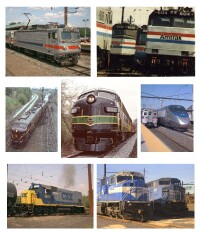 |
The Philadelphia Chapter of the National Railway Historical Society Established in 1936
|
|||||||
Reading FP7 903
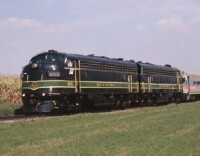 |
The restored Reading FP7 903 (owned by the Philadelphia Chapter) and its sister 902 (owned by the Lancaster Chapter) were part of the original order of six units placed by the Reading Company in March of 1950. Initially the order was for three A units (FP7's) and three B units (F7B's) to replace the steam power on the Crusader, Wall Street and other trains, but this was changed to all FP7's, due to, among other reasons, turntable size constraints at Green Street passenger enginehouse and greater steam generator capacity. |
| c. 2003 Thomas Duke | |
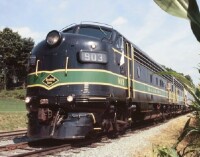 |
The units were completed and shipped in pairs. Units 902 and 903, builder # 11389 and 11390 respectively, were released from EMD's La Grange shop on June 1, 1950, working their way east on the B&O. They powered their first Reading passenger train, the Wall Street, on June 6, 1950. The Reading acquired two more units in 1952, and all eight continued in use until the mid 1960's. Due to declining ridership and smaller trains, the pairs were often broken up and used as sole power on a run, except on the Crusader and Wall Street, which still rated two units. |
| c. 2003 Thomas Duke | |
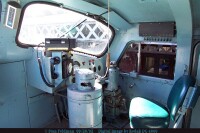 |
The acquisition of RDC's by the Reading and their increased use on passenger trains allowed the Reading to start to dispose of its FP7A's. Two units, 904 and 905, were retired in 1965 and traded in to ALCo for C630's. In 1966, 906 went to EMD as a trade-in for SD45's, and two years later 901 and 907 were sold to EMD, leaving 900, 902 and 903 still on the roster. |
| c. 2003 Stan Feldman | |
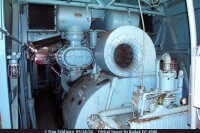 |
The remaining units were used in push-pull service on the Reading to Philadelphia run, with one unit kept as a backup. This service continued after SEPTA took ownership of the train in 1974, and after Conrail assumed operation of the train in 1976. In 1977, SEPTA had "SEPTA OWNER" stenciled on the side of the units, and they were renumbered on paper into the Conrail numbering system, with 903 finally getting its new number, 4373, applied to the engine in 1978. |
| c. 2003 Stan Feldman | |
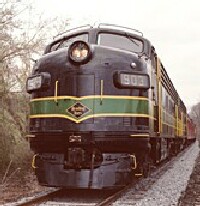 |
In February of 1978 SEPTA decided to apply a new paint scheme to the train, and the infamous red, white and blue "Circus Train" was born. The first unit to be repainted was 4373(903), with the plan to rotate the equipment out individually so as not to interrupt service. But later that month, the train derailed in Norristown, and it was decided that the entire train would be pulled and replaced by RDC's while it was repaired and repainted. The complete "Circus Train" debuted in June of 1978. During its service under SEPTA, the train was also often used on the Bethlehem Branch in between its runs to and from Reading. |
| c. 2003 Albert Alecknavage | |
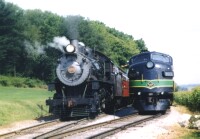 |
In 1981, with the anticipated opening of the Commuter Rail Tunnel in Philadelphia, SEPTA decided to cease all non-electrified rail service, and the train was retired and stored at SEPTA's Wayne electric shop, except for 4373(903) which was stored in Reading. The future of the equipment was unknown, but fortunately fate would be much kinder to the remaining units than it had been to their sisters. |
| c. 2003 Sheila Dorr | |
| The Philadelphia Chapter purchased 4371(900) from SEPTA in August of 1983, with intentions of donating it to the Railroad Museum of Pennsylvania in Strasburg, where it was sent for storage in September of 1983. But negotiations fell through, and instead the unit was leased and finally purchased by the Reading Company Technical and Historical Society. It has been cosmetically restored and is kept in Leesport, PA on the society's grounds. | |
| After initially being acquired by a private party in December 1983, 4372(902) was purchased by the Lancaster Chapter and stored on the Strasburg Railroad until its restoration. | |
| SEPTA 4373(903) was purchased by the Philadelphia Chapter in September of 1983, and that same month was shipped from Reading to join 4371(900) in storage at the Railroad Museum of Pennsylvania in Strasburg . After a long restoration process that began in 1986, the pair of repainted and restored Reading FP7A's 903 and Lancaster Chapter's 902 were finally dedicated in 1995 and have been used in excursion service since. | |
| In January of 2007, the Lancaster Chapter membership voted to donate 902 to the Reading Company Technical and Historical Society. In October of 2007 the two engines operated the first excursions in years on the Perkiomen Branch from Pennsburg PA to Dillinger Tunnel near Emmaus PA. | |
| The FP7's currently reside out of service but on display at Steamtown National Historical Site in Scranton PA. | |
| For video clips, check out the FILES section of the PhillyNRHS Yahoogroup | |
| Sources | |
| Reading Company Technical and Historical Society | |
Direct website questions or comments to phillynrhs webmaster
Website created June 12, 2002
Last Updated June 3, 2015